Stories from and about library student employees and interns.
Student Stories
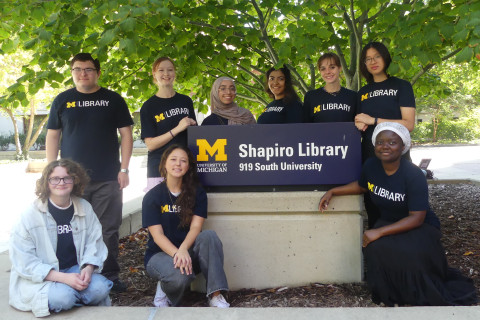
Posts in Student Stories
Showing 51 - 60 of 141 items
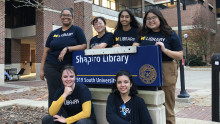
- Amira Said
- Elizabeth Shalanda Whitmore
- Dawn HY Lau
- Abigail Noel Nighswonger
The U-M Library Student Ambassadors are a team of students who work for the library to promote library services and resources to students through targeted social media campaigns and digital exhibits, publicize and host library events that foster engagement, diversity, and inclusion, suggest ways to improve student experience by participating in meetings and focus groups with library staff, and represent the U-M Library at campus fairs and events. Their work is highly collaborative and a goal of the program is to give them the agency to make their own decisions and plans for the year. These governing principles allow for a highly creative and fun environment that results in some really great library programs each year. Here’s a reflection from four of our recent Ambassadors.
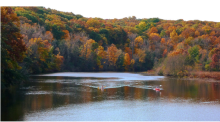
- Anne Cao
- Cody Scott Quiroz
Do you ever wonder how much more we can know about the water that we depend on? This semester, I was involved in a Student Engagement Fellowship with the U-M Library on the Huron River named A River Runs Through Us. The Huron River Watershed, which serves as a vital resource for our community and the University of Michigan in Ann Arbor, is currently facing a multitude of challenges, including but not limited to a creeping dioxane plume and regular wastewater releases, making it ever more essential for us to become more informed about these issues and take action to protect this important river. Undoubtedly, the health and sustainability of the watersheds surrounding us directly affect not only our own lives, but also the lives of the various beings and organisms that inhabit our environment. For this reason, our goal for the project is to highlight these issues as well as resources and local activists that have been doing great work to protect the river and the watershed.
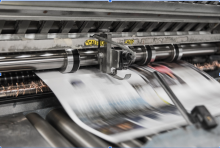
- Michael Thomas Hartt
- Shauna-Kay Gabrielle Harrison
The Fake News Educational Materials Fellowship was initially conceived with the intention of researching fake news, misinformation, and disinformation within journalism in a range of areas: the psychological and socio-economic causes of the creation and circulation of fake news; data literacy and determining credibility; and bias in news reporting, analysis, and selection.
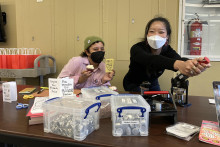
- Megan Rim
Megan Rim reflects on one of the highlights of her graduate career — working as a Digital Scholarship Public Engagement Intern.
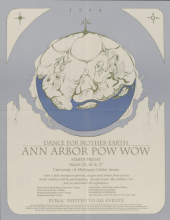
- Allison Xuan Jiang
A student perspective on powerful learning experiences during the Michigan Library Scholars Internship Program. This capstone project is about the Dance for Mother Earth Powwow. It is a physical exhibition displayed in the Hatcher Library North Lobby from August 1st through October 27th, 2022.
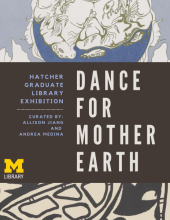
- Andrea Medina
Did you know the largest student-led powwow is hosted in Ann Arbor each year? And it will soon be celebrating it's 50th event. Learn more about how this intertribal, cultural celebration of indigenous culture grew from a small local powwow into one of the larges powwow's in North America. The Dance for Mother Earth exhibition in Hatcher's north entrance display cases not only explores the history of the powwow, but also connects students and library patrons with current resources and information on modern indigenous culture and issues.

- Bennett Webster Lowe
Classes often place a limit on what research is necessary for essays and tests, but the Michigan Library Scholars program gives its interns freedom to pursue any and all available information. This concept can be intimidating, but a necessary part of pursuing a career in academic scholarship. As a history and political-science major, this internship program has offered me the opportunity to pursue my own ideas and develop crucial skills.
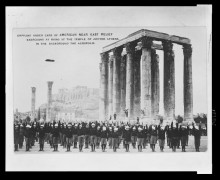
- Elaina Ryan
During my university experience, I have been busy and rushed, running to one activity after another. I am pursuing a double major in History and Classical Archaeology while at the same time taking heavy course loads to graduate early. The Michigan Library Scholars Program was the first time I was able to slow down to study and appreciate a historical event. It gave me the opportunity to develop a lot of different skills, and gave me the confidence to move forward into the working world next year.
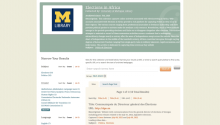
- Sarah Elizabeth Stolar
Working for the Elections in Africa Web Collection project as part of the Michigan Library Scholars Program helped me develop valuable skills in project management, technical web archiving abilities, and knowledge on African politics. Though there were obstacles in approaching the wide range of content and the limitations of the Archive-It tool, I greatly improved in my capacity to adapt and problem solve as a contributor to this project.
•
- Pau Nava
Pau Nava (they/them) was the 2021 Rackham Public Engagement Fellow hosted by the University of Michigan Library Digital Scholarship (DS) team. This initiative is part of the The Rackham Public Engagement Internship Program which offers summer fellowships for graduate students interested in pursuing public facing projects at various partner institutions within the University and beyond. Pau is a PhD Candidate in the University of Michigan’s department of American Culture. Their research focuses on Midwest Latinx art networks, and includes Latinx Digital Humanities projects such as the Chicana por mi raza (CPMR) digital memory project and the new digital tool Rhizomes of Mexican American Art Since 1848.